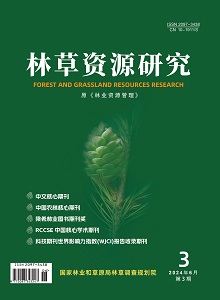This study explores the carbon content characteristics of various organs of landscaping tree species in Zhengzhou city.It provides a basis for selecting and formulating policy on landscaping tree species with carbon sequestration value in Zhengzhou city.The carbon content of five organs,including trunk,branches,leaves,bark,and roots,was measured using the potassium dichromate external heating method for 14 landscaping tree species,including Platanus orientalis L.,Populus L.,Michelia alba DC.,Ginkgo biloba L.,Prunus cerasifera 'Atropurpurea',Prunus serrulata var.lannesiana(Carri.)Makino.,Crataegus pinnatifida Bunge,Prunus davidiana (Carrière)Franch.,Osmanthus fragrnas(Thunb.)Lour.,Ligustrum lucidum Ait.,Magnolia grandiflora L.,Cedrus deodara(Roxb.)G.Don,Eriobotrya japonica(Thunb.)Lindl.,hotinia serratifolia(Desf.)Kalkman.The results show that:1)The variation range of carbon content in different organs among 14 tree species is 25.88% to 59.15%.2)For the same tree species(taking the example of the Platanus orientalis L.),the coefficient of variation between barious organs is 7.41% to 9.36%,and the coefficient of variation between the same organs is 0.16% to 2.54%.3)For different tree species,the coefficient of variation between the same organs is 10.44% to 19.30%,and the coefficient of variation between different organs is 4.73% to 22.54%; The overall average carbon content of variaus organ is as follows:trunk>branches>bark>leaves>roots,and the carbon content of the trunk is significantly higher than others.

